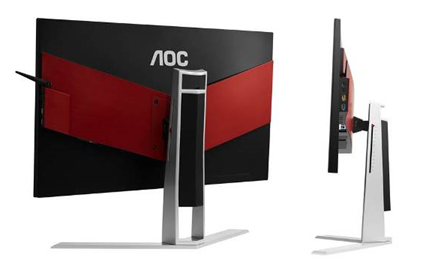
WiFi is accelerating, 802.11ac technology is knocking on the door
802.11ac can radically transform your home entertainment systems. It provides faster, better quality data streaming and is still more reliable than previous technologies. In addition, it supports multiple devices with greater coverage, meaning it takes wireless data transmission to a new level throughout the household.

Older Wi-Fi protocols, such as 802.11b, can sometimes degrade connection quality due to lower bandwidth. Thus, if users want to view a lot of media content on the World Wide Web at one time, they may face poor picture quality and poor sound. However, with 1ac capable of speeds of up to 802.11 Gbit / s, such problems can be avoided. This technology is three times faster than its predecessor, 802.11n.
Higher speeds eliminate an annoying problem, buffering, that users who watch video online. This is because with slower Internet connections, a small portion of the video must be stored before playback can begin for playback to continue. However, 802.11ac is so fast that video playback can start immediately, even if it’s a high-definition movie. 802.11ac supports high-quality playback, delivering HD-quality streamed content to household devices, including networked televisions, game consoles, computers, and mobile devices. In addition, the higher speed allows family members to watch different streamed content on each device at the same time.

The higher speeds offered by 802.11ac have three main components: a wider radio spectrum, more antennas, and higher frequency modulation. These enhancements result in a more reliable signal, reducing the number of disconnections. Together, this means delivering the speed and reliability of wired access to households while also providing the flexibility of wireless connections. The reliability of the technology is especially important for low-latency content such as streamed movies or music where a continuous signal is required. Online gamers also require constant, fast data transfer to avoid delays, which can even lead to game loss.
Among the benefits of 802.11ac are worth mentioning its range. It is the most mobile-friendly solution of the wireless standards presented so far. Multiple antennas on 802.11ac wireless access points provide better coverage throughout the household, with a signal that reaches even the most remote, secluded corner of the house. 802.11ac users can expect full household coverage with a minimal amount of blind spots. This can fill mobileists with satisfaction who like to get into quiet corners of the house during a video call. Users will also enjoy another feature of 802.11ac: longer uptime. Because your transmitter can transmit a larger amount of data in a shorter amount of time, this means that you can stop for a longer period of time after the data is transferred. As a result, smartphones and tablets get the content you want faster, while the technology also conserves the batteries of these devices.

The new protocol is compatible with existing Wi-Fi standards such as 802.11a, 802.11b, and 802.11n, along with many of its benefits. Connect devices using these solutions in the 5 GHz band. This involves less interference than the 2,4 GHz frequency range, so the signal will be stronger and reliability will increase. The real benefits of 802.11ac technology come when it comes to upgrading devices such as home theater systems, personal computers, tablets, and smartphones. Handset manufacturers, including giants such as Apple and Samsung, are also advocating the rapid spread of super-fast wireless technology and incorporating this standard into their new devices that will emerge in the future.
The introduction of 802.11ac in households means that the home entertainment system will become “future-proof”. It allows users to experience things they didn’t have before before, including streaming HD video to multiple, different devices at the same time.













